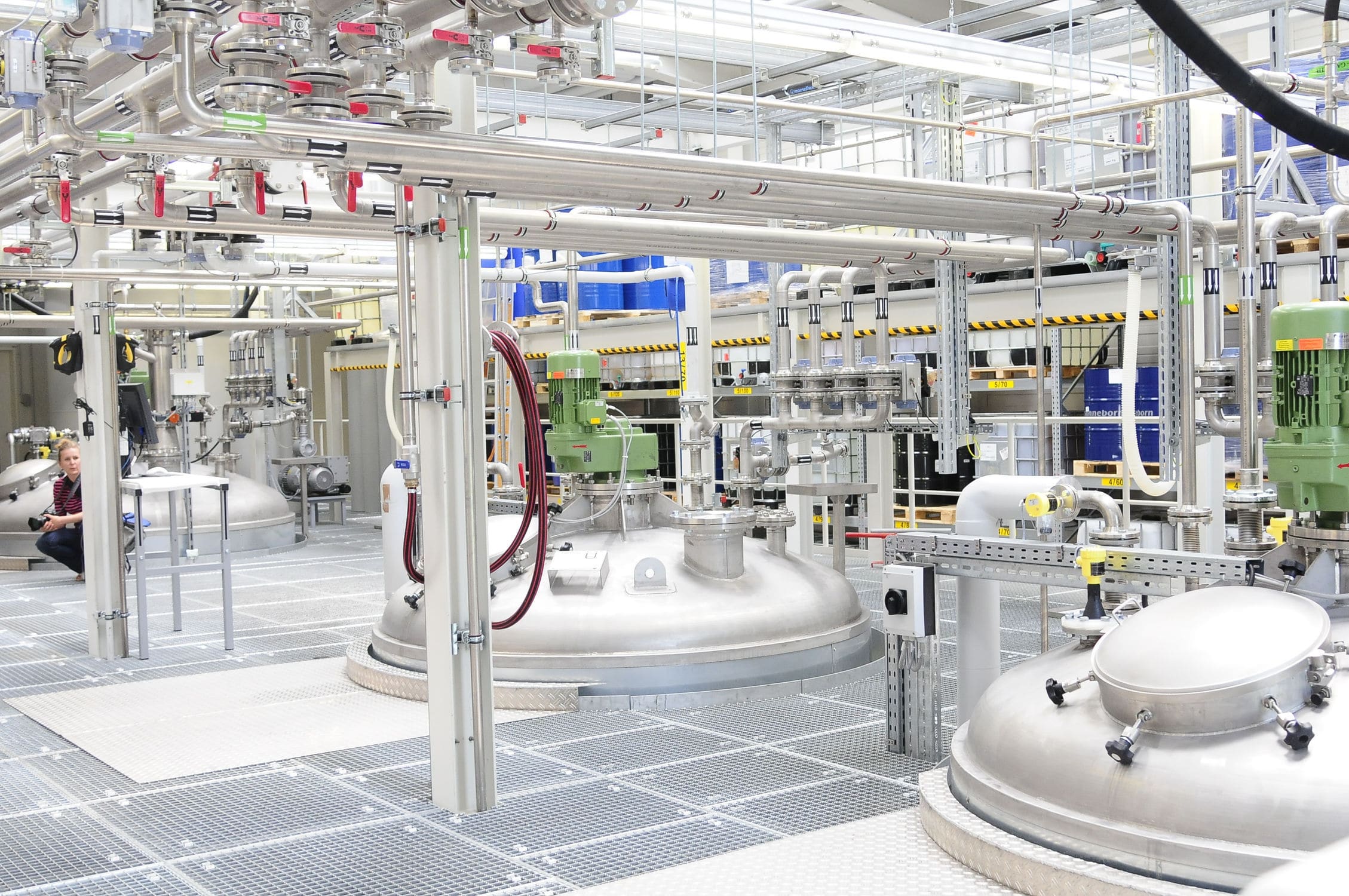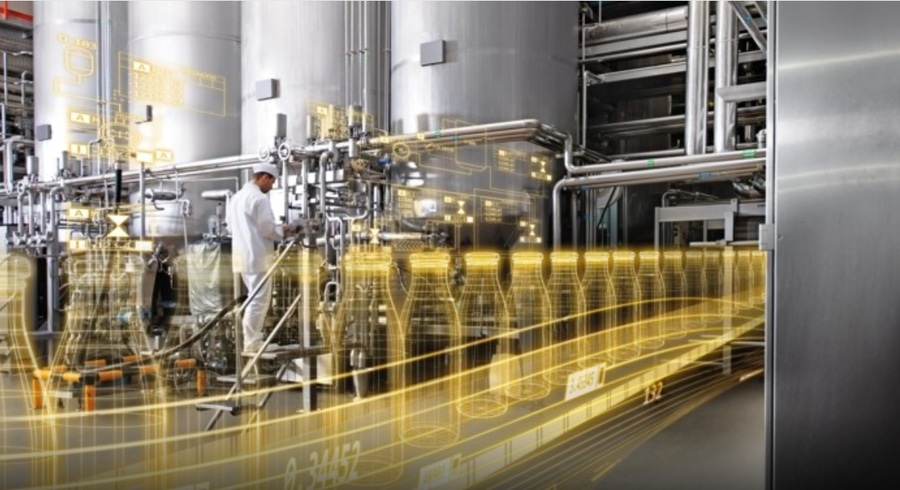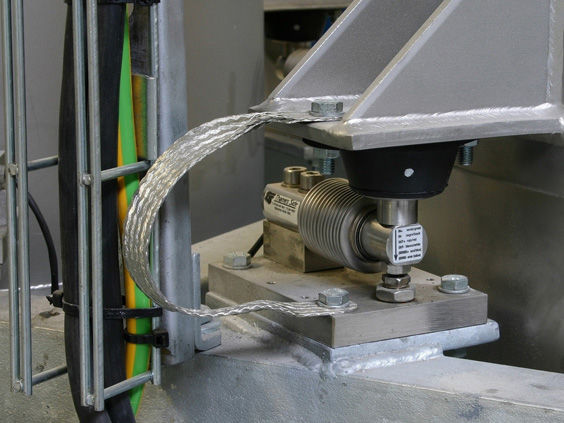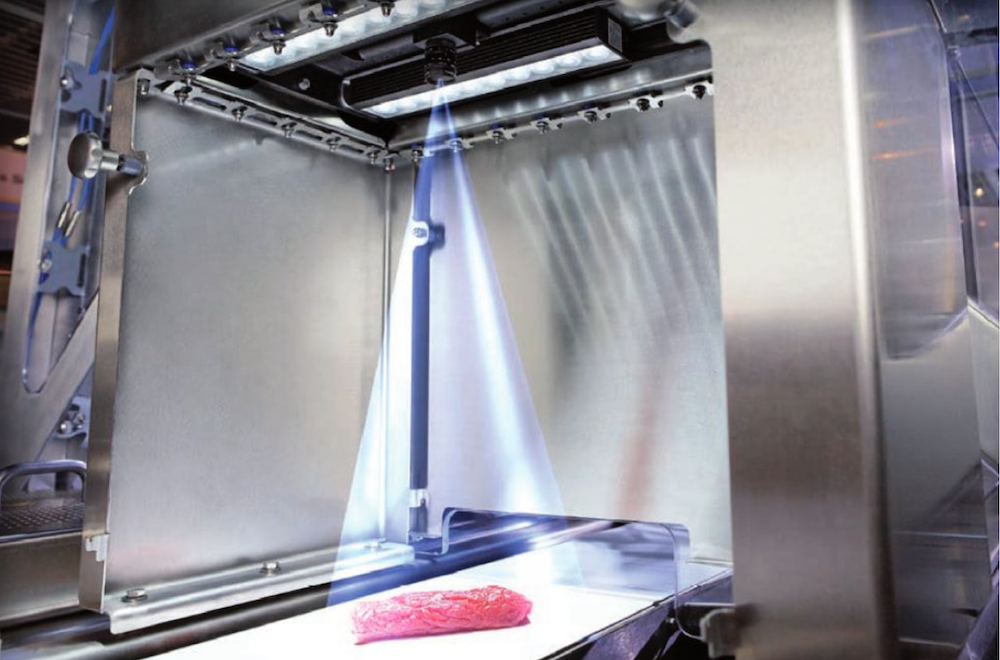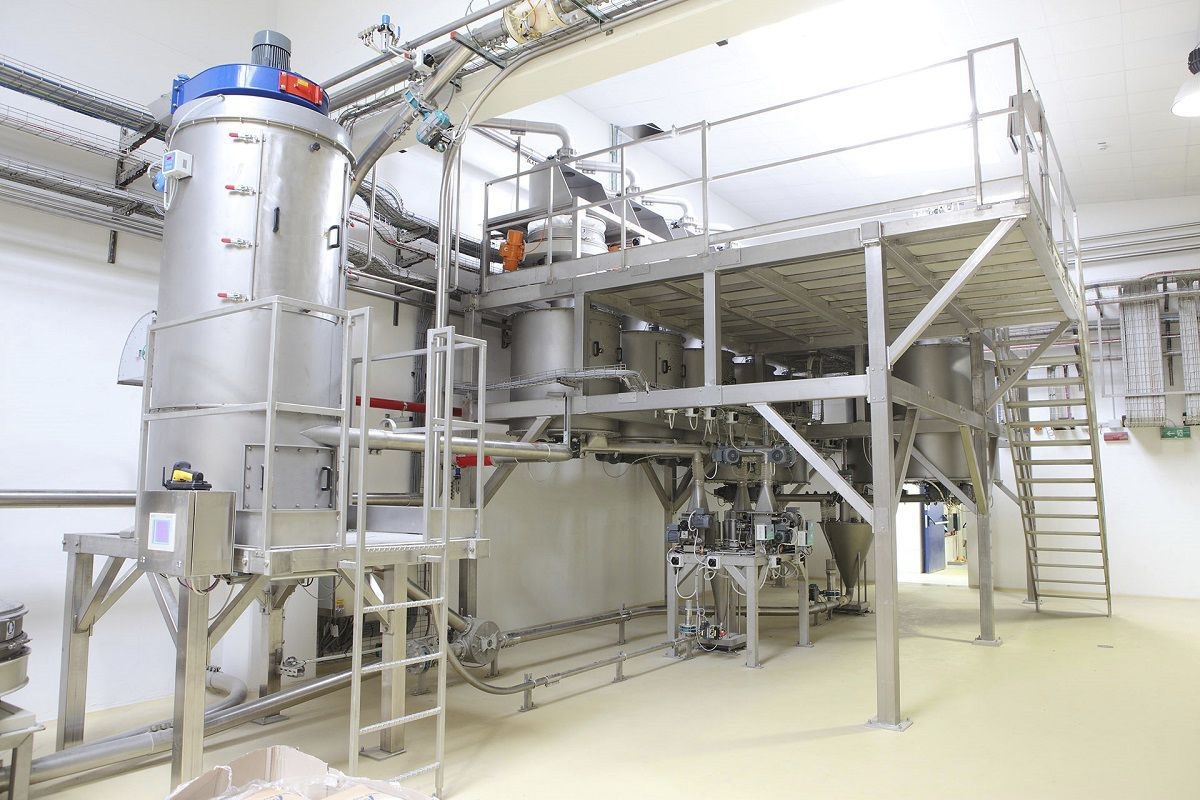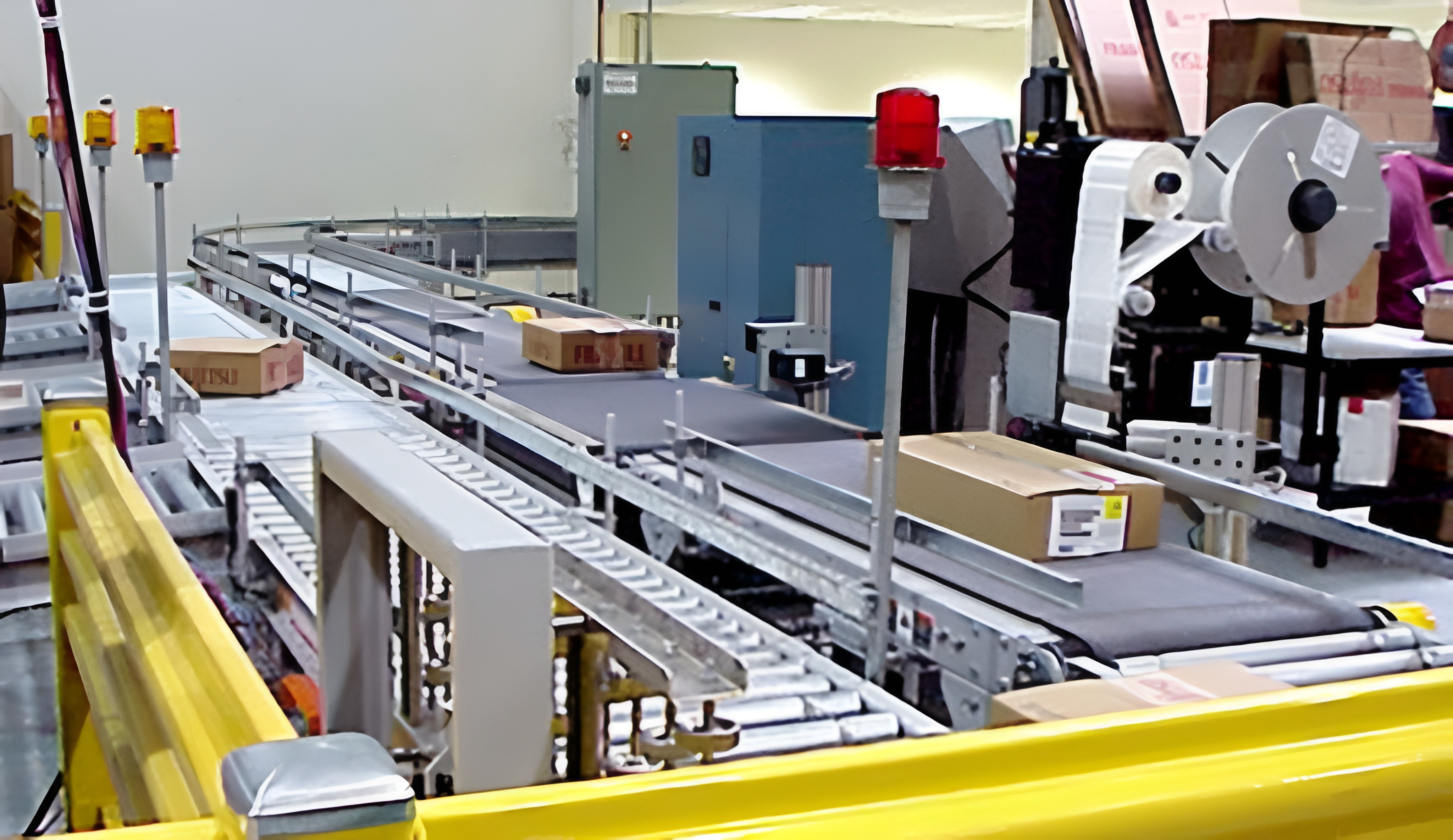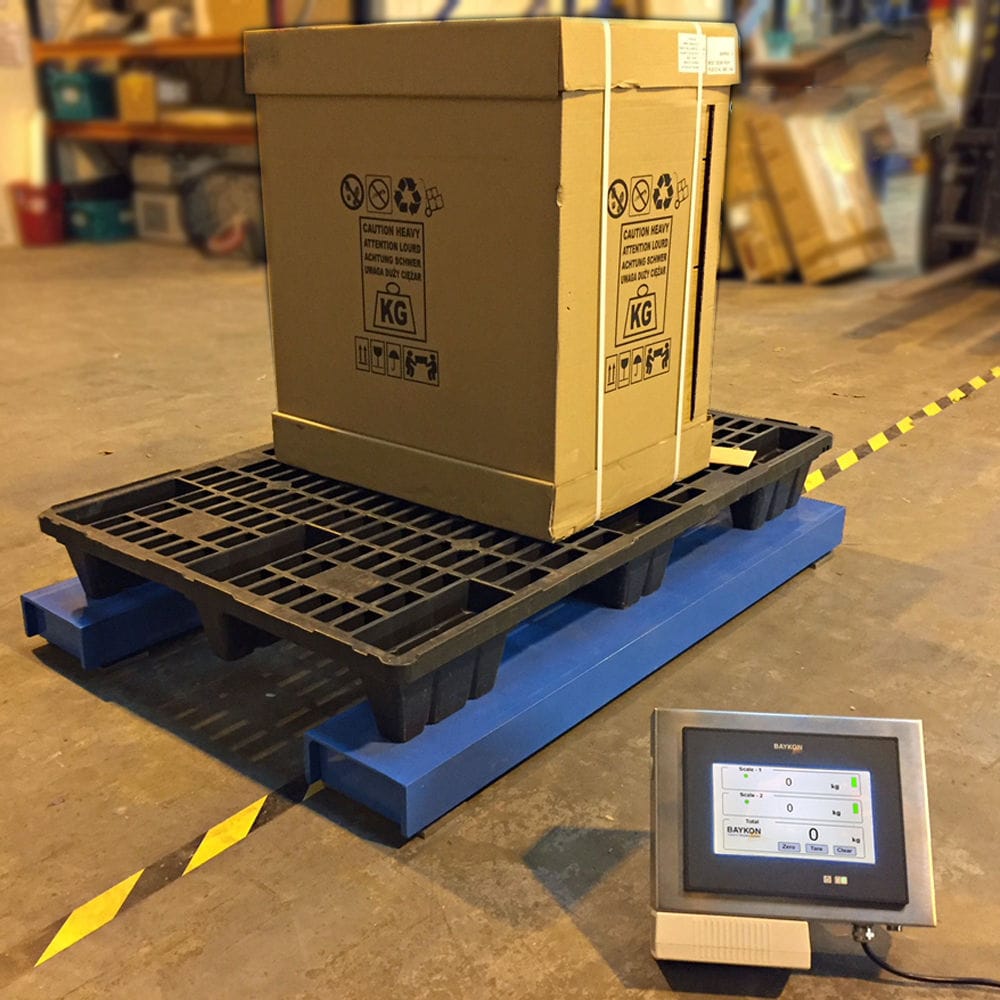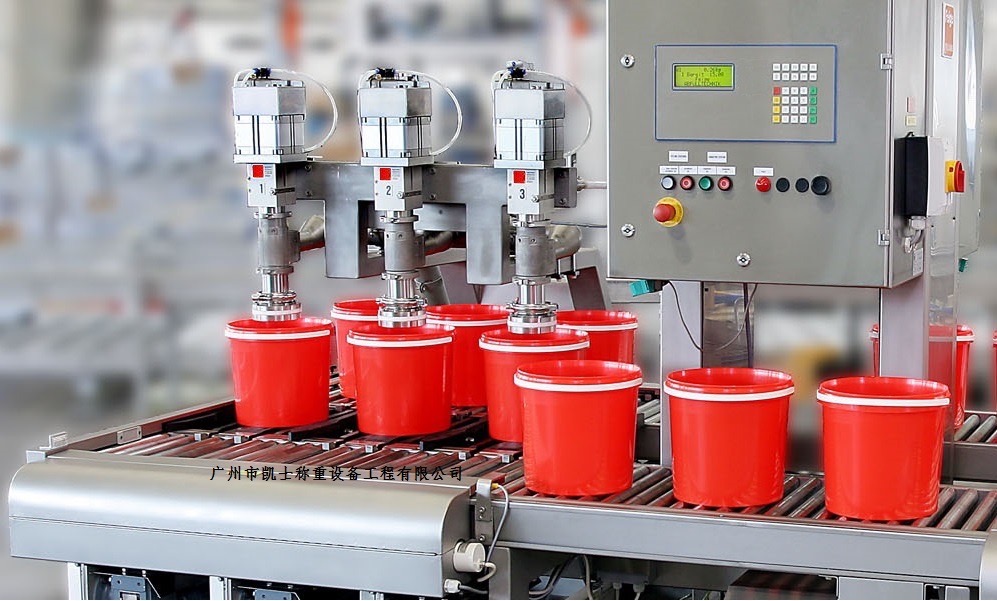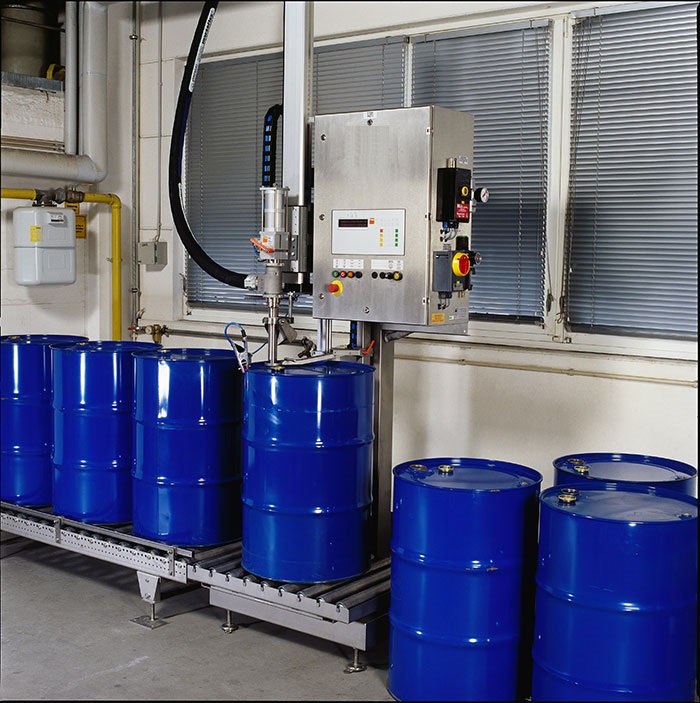

The auxiliary filling machine uses position servo control to precisely control the stroke of the piston cylinder, which also achieves the purpose of accurately controlling the filling volume. Collect liquid viscosity, temperature and pressure, and realize stroke compensation of piston cylinder through a certain compensation algorithm. DSP receives the position command signal sent by PLC, and superposes the quantifiable weight given by PLC with the compensated weight as the total quantifiable weight control.
 020-34563445
020-34563445The automatic Filling machine is divided into two parts: crude filling and fine filling. The crude filling is determined on the weighing instrument when the barrel is transferred to the liquid crude filling position. The cylinder filling nozzle automatically presses the mouth of the barrel, and the liquid is sucked into the barrel under the action of the diaphragm pump. After the crude filling, the barrel body moves along the transmission line to the fine filling station, and the filling weight is precisely limited to the rated value by the twisting dragon filling mechanism. The barrel mouth is positioned and the barrel body is locked. When the sensor indicates the target weight, the filling mechanism releases the nozzle, the filling valve is closed, the filling nozzle is retreated, and the filling is completed.
The control sequence of the Filling system is generally as follows: when the barrel reaches the filling position, the proximity switch gives a signal, and after PLC receives it, it controls the lifting cylinder of the pallet and pushes the pallet to rise. When the barrel mouth is near the discharge port, the lifting cylinder stops acting, the filling valve opens, and liquid filling begins. When the weight of the filling liquid reaches the predetermined requirement, the Electronic scale sends a signal to the PLC, the filling valve is closed, the tray is lowered, and the barrel is sent to the next process by the conveyor roller. When the cylinder pushes the bucket tray up and down, it is controlled by PLC timing; When the barrel reaches the tightening position, the proximity switch gives a signal, and under the control of the PLC, the lifting cylinder pushes the tray up to the designated position, and the barrel is fixed by the clamping device. At this time, the motor drives the tightening mechanical clamp head to turn, the ultrasonic sensor on the clamp head to rotate with it, and the barrel handle positioning scan is carried out. After finding the position of the handle, the PLC controls the mechanical clamp head to drop, and the stuck barrel handle begins to tighten operation until the torque sensor has signal output, the control clamping device is released, the rotation is stopped, and the clamp head is withdrawn. When inflating, the clamping device fixes the barrel, the top pressure plate presses the air handle to open the air inlet of the barrel, and fills the compressed nitrogen until the pressure gauge output signal stops filling, and the air tightness is checked.




